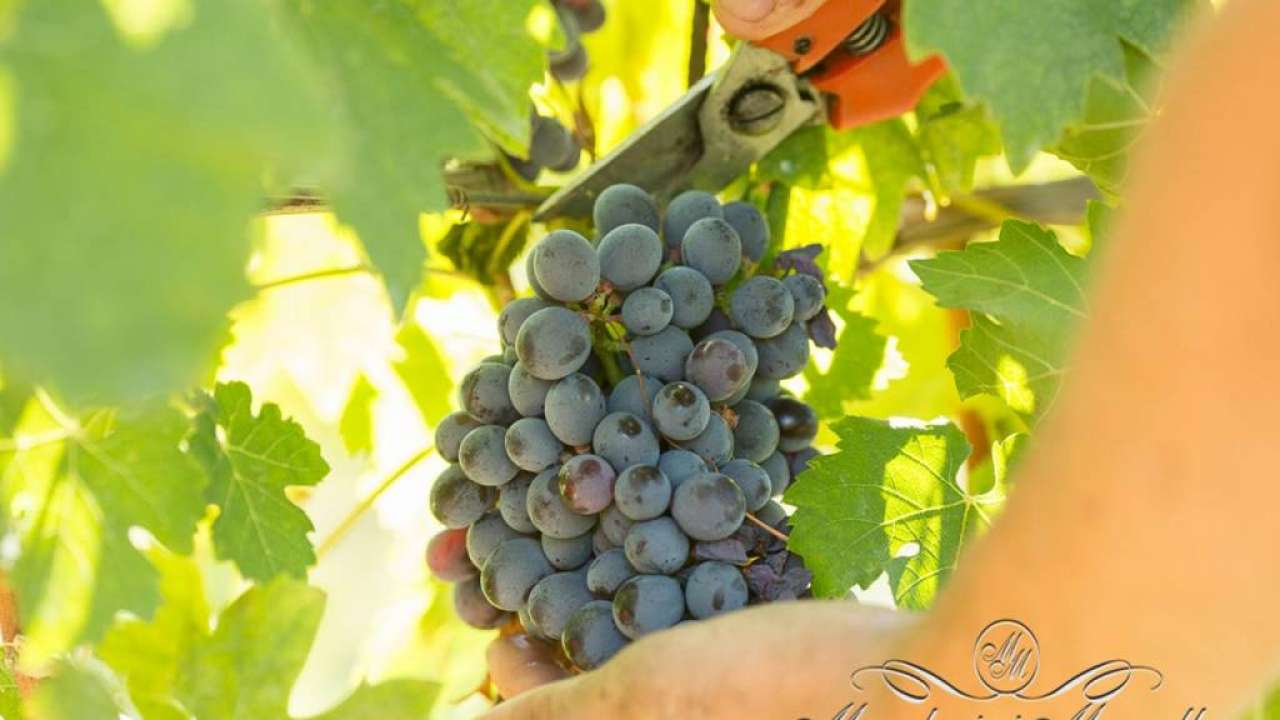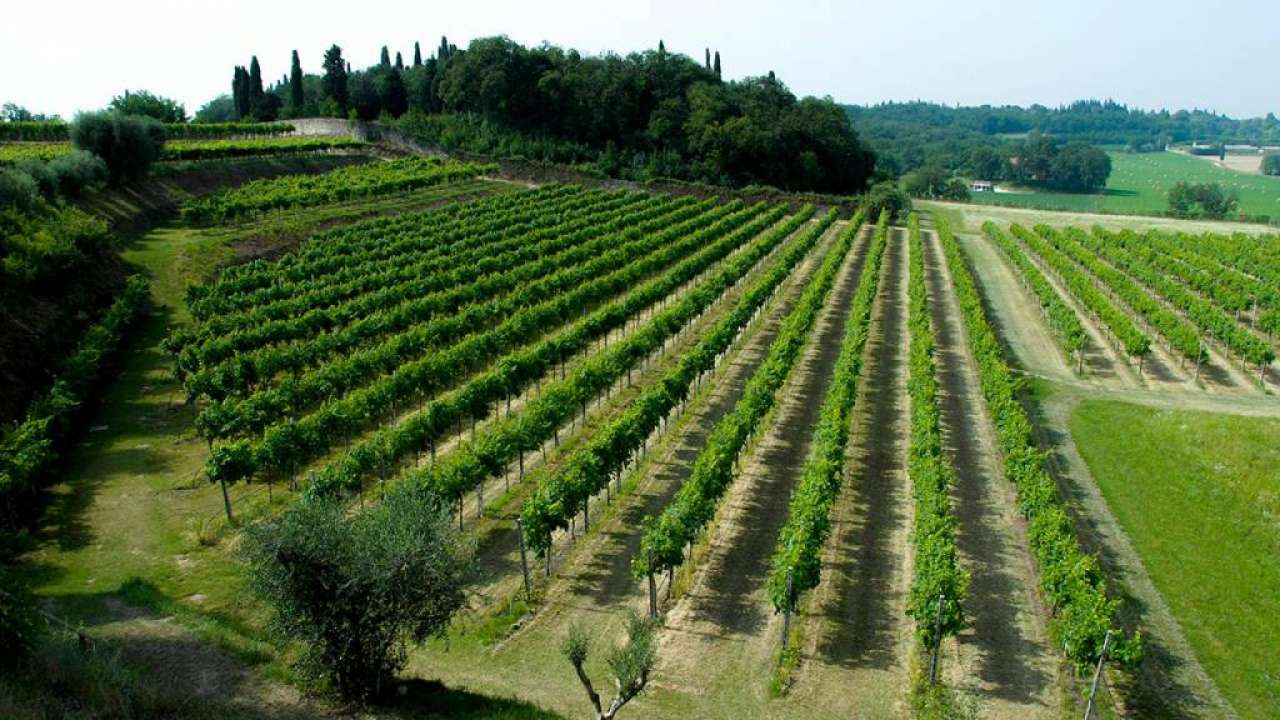



Wine: from the Shores of Lake Garda to the Countryside around Verona and Brescia, a Geography of Perfumes, Colors and Flavors
Wine-making comprises a wealth of tastes, traditions and culture which shape the landscape and offer tourists an unforgettable journey for the senses: enjoying the right wine, paired with traditional food, against a magical backdrop.
For those tourists who love trips that bring nature, art and good food together, tastings in wineries are a must.
This is why the Wine routes in Veneto and Lombardy were born, as in many other Italian wine-making regions. For more than 20 years now, they have been safeguarding the regions' heritage of wine-making.
As is the case for the Garda” DOP Extra Virgin Olive Oil, the quality of DOC and DOCG wines (Controlled Designation of Origin and Controlled Designation of Origin Guaranteed) from Lake Garda are monitored and safeguarded by consortia representing some of the most renowned wine-making areas in Italy.
It is in this map of tastes that the Bardolino, the Valpolicella, the Soave, the Lugana, the Custoza and the Valténesi Wine Consortia operate to ensure that what they produce maintains the highest standards, reflects the land and respects its wine-making traditions.
Another source of pride for the Veneto region is the international wine and spirits exhibition which is held every year in Verona. Established in 1967 and now boasting over 4000 exhibitors, Vinitaly is the wine industry event worldwide – a unique opportunity for visitors to get to know some renowned winemakers, as well as the most important ones from the Veneto.
The Valtènesi Wines D.O.C.
Valtènesi is the historical name of the hilly area on the west side of Lake Garda, which reaches the shores of the lake between Salò and Desenzano and precisely in the municipalities of Manerba del Garda, Moniga del Garda, Padenghe sul Garda, San Felice del Benaco and Soiano del Lago.
The Groppello grape, the environment and the climate of Lake Garda give Valtènesi wines unique and very particular characteristics that can be found in the two best known types of wine: claret and red wine.
The red and claret Valtènesi DOC wines (denomination of origin controlled since 2011) are produced with a minimum of 50% of grapes from Groppello vines: a variety of small and very compact bunches of grapes, with thin-skinned grapes, which loves sunny and breezy exposures.
Other grapes may also be used for the production of the DOC Valtènesi wines, as long as they are part of those authorized by the province of Brescia.
Valtènesi Chiaretto is undoubtedly the most renowned wine in the area: a rosé wine, with a more or less intense color, with a delicate and fruity aroma, which is fresh on the palate. Every year, at the beginning of June, the Chiaretto is celebrated in the famous “Italia in Rosa” festival which takes place in Moniga del Garda.
The Valtènesi red wine is instead characterized by particular ruby reflections, with a fresh scent that reminds the rose, but also with light spicy notes that refer to the flavors of cinnamon and cloves.
White wines from the south: Lugana and Custoza
The soil in the lower Lake Garda area is rich in clay and minerals and takes full advantage of the lake's temperate climate. The ancient wine-making tradition in these rolling morainic hills is greatly appreciated by those who love a wine that fully merges its flavor with the land and its history. The southernmost wine-producing areas in the Veneto are white wine country, notably for the Lugana DOC and the Bianco di Custoza DOC.
Due to the calcareous soils in which the fruit is grown, from Peschiera del Garda to the hills around Brescia, in Lombardy, Lugana wines are full-bodied and well-structured, with a bouquet of citrus notes and a hint of almond. The Lugana (DOC as of 1967) strengthens bond to the original production area through a production standard requiring that at least 90% of the grapes used belong to an indigenous variety of Trebbiano.
This level of quality and authenticity is monitored by the Lugana Consortium (“Consorzio Lugana”), which has been active since 1990. The Lugana is a white wine to enjoy once it has aged, paired with an eel dish or with fish from the lake. There are several types of Lugana wine: the 'basic' Lugana DOC, the Lugana Superiore, which requires at least one year of aging, the Lugana Riserva, aged for at least two years, the Lugana Vendemmia Tardiva ('late harvest'), which is made with fruits harvested between the end of October and the beginning of December, and the sparkling Lugana Spumante.
The Bianco di Custoza DOC is especially valued for its great versatility in pairings: perfect for summer evenings, it also enhances some of the richer traditional dishes, like tortelli di zucca (a kind of pasta, usually homemade, with a pumpkin filling), risi e bisi (a rice and pea dish) and fried foods. It is a fresh, but very fragrant wine, as it is made from a mix of different grape varieties, although they are mostly native. The Custoza DOC is made in the area from Lazise to Peschiera del Garda and up to Bussolengo, as are the Custoza Superiore, the Custoza Spumante and the Custoza Passito (a sweeter version made from dried grapes).
The area of the 'young' wines: Bardolino DOC wine
Every year, during the first weekend of October, the traditional Grape and Wine Festival (“Festa dell’Uva e del Vino”) is held in Bardolino. The event attracts many tourists and perfectly captures the bond that ties the local population to the wine-making tradition in the Venetian Garda.
The Bardolino DOC area, which has been safeguarded by the “Consorzio Tutela Vino Bardolino DOC” since 1969, comprises the towns that dot the eastern shore of Lake Garda, from Peschiera and Lazise to Torri del Benaco and Caprino Veronese.
Two native grape varieties are used to make Bardolino wines, Corvina veronese and Rondinella – two old varieties which are perfectly suited to the moraine landscape and the lake's climate.
Three wines are typical of this area, the Bardolino Superiore DOCG and two young wines, the Bardolino Chiaretto DOC and the Bardolino Novello DOC, and each of them can boast the 'Classico' label if they are produced from vines located in the oldest areas. The Bardolino Superiore was the first red wine from Veneto to obtain the DOCG denomination in 2001.
Out of the three wines, it is the only one to require at least one year of aging. This is a fragrant wine, with flavors of red fruits and spice that complement lake fish, baccalà (stockfish) and chestnuts beautifully. The Chiaretto is a rosé wine with coral pink glints. It is obtained by reducing the maceration of the skins to a minimum. It is a fresh wine that gorgeously marries raw fish dishes, sushi included. The Novello brings the list to a close. This red wine is bottled by December and should be drunk before spring – a feat which should not prove too difficult, especially if it is served with Venetian prosciutto and aged cheeses.
Whites and reds from the Veronese heartland: the Soave DOC and Valpolicella DOC wines
The wine-producing areas of Valpolicella and Soave boast a considerable number of Controlled Designations of Origin Guaranteed. The Valpolicella reds come from vines that are cultivated in dry-stone-wall-terraced vineyards, called marogne, where trees grow among the rows of grapevines. The resulting landscape is the expression of a century-long tradition, from which one of the most important Italian red wines stems: the Amarone della Valpolicella DOCG. As the two year aging process in oak barrels proceeds, its garnet-red color becomes deeper and deeper. Because of the Amarone's structure and the slightly bitter notes acquired as the fruit rests for some months in special grape drying rooms, it makes the ideal accompaniment for roasts, game meat and sharp cheeses. But the Valpolicella area produces another wine gem north of Verona. The Recioto della Valpolicella (DOCG since 2010), in contrast to the Amarone, does not require aging and presents much sweeter flavors, which go wonderfully with a Veronese pandoro or dark chocolate. A further red wine which is typical of this area is the Valpolicella Ripasso (meaning literally 're-pass'). The name evokes its distinctive feature – the grapes undergo a second fermentation in spring.
The area of the Venetian white wines par excellence is the Soave production region. Thanks to the combination of ideal lands for cultivation, controlled yield from the grapevines and expert storage in wine cellars, since 2001 the Soave Superiore can pride itself of the DOCG denomination. The Soave Superiore DOCG is an ideal wine for aging (even up to ten years). Its floral notes and delicate hints of vanilla make it a sublime accompaniment for freshwater fish and seafood. If, instead, the delicacy to savor is baccalà mantecato (a creamy stockfish mousse), then the perfect wine is the Soave Superiore Riserva, which is aged for at least two years. Last but not least, as since 1998 this white Soave also boasts the DOCG status, comes the Recioto Soave, a 'meditation wine' to be leisurely savored. Bright yellow in color, it is artisanally produced by allowing bunches of grapes to dry for 4-6 months and letting their juice ferment in small barrels over a long period of time.









